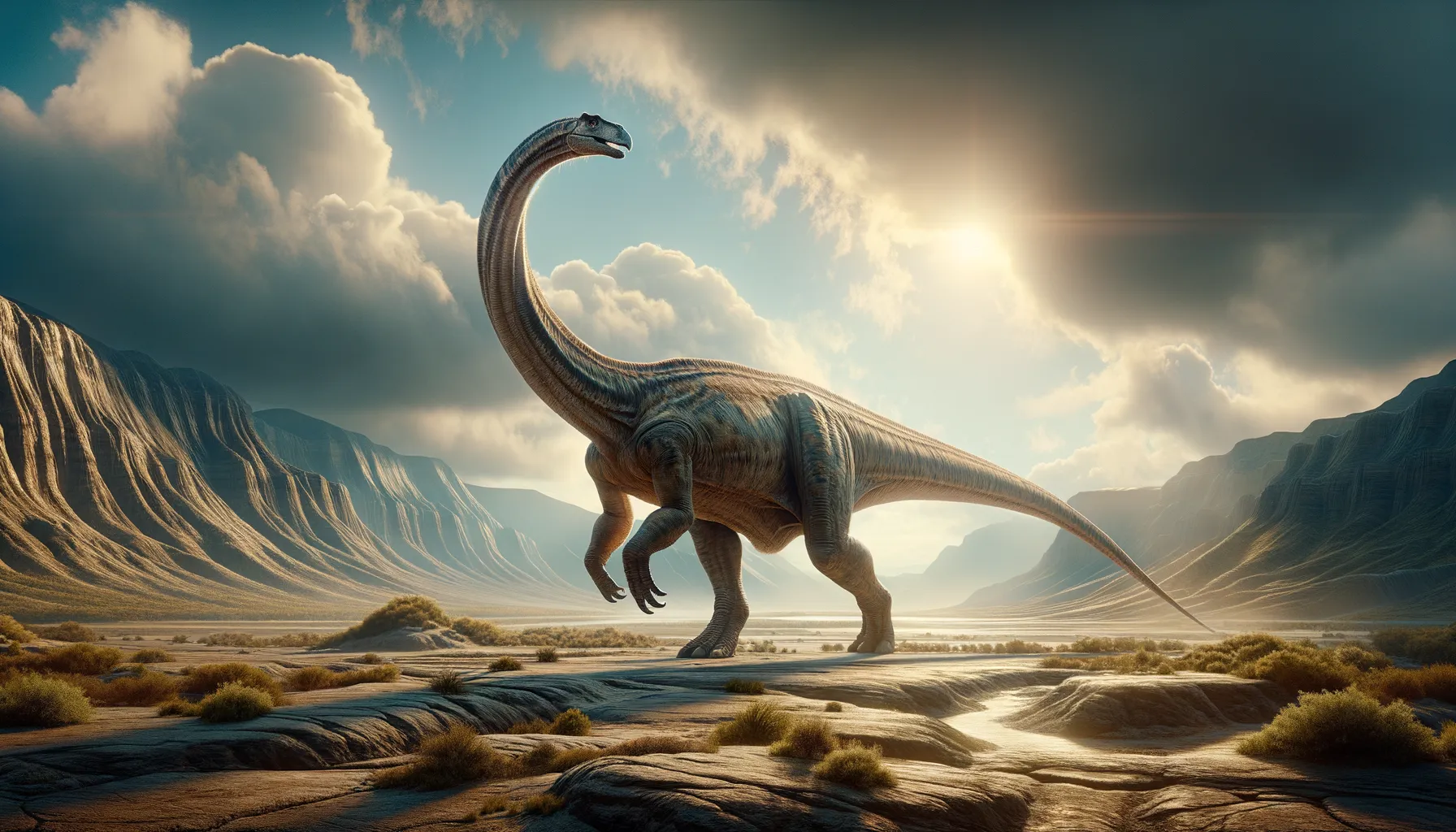
Gondwanatitan
A gentle giant of the ancient savannas.
Period
Cretaceous
Length
Measured about 8 meters in length.
Height
Approximately 4 meters tall.
Weight
Weighed around 10 to 13 tons.
Gondwanatitan was a titanosaur, a long-necked plant-eating dinosaur that roamed the ancient landscapes of South America during the Late Cretaceous period. Known for its distinctive long limbs and tail, this dinosaur is a significant find in understanding the diversity and distribution of sauropods in Gondwana, the southern supercontinent. Its fossils offer insights into the evolutionary paths of titanosaurs, highlighting their adaptation to various environments.
Diet
Gondwanatitan was herbivorous, feeding primarily on leaves and vegetation available in its environment. Its long neck allowed it to reach high branches and consume a variety of plant material.
Hunting
Being a herbivore, it did not hunt. Instead, it would have grazed peacefully in areas abundant with flora, using its height advantage to access foliage beyond the reach of other herbivores.
Environmental challenges
Gondwanatitan faced environmental challenges such as seasonal changes, which affected the availability of food sources. Predation by large theropods would have been a significant threat, especially to younger or weaker individuals. Its large size may have aided in deterring some predators, though it would still have required vigilance for protection against aggressive carnivores.
Speed
Slow-moving due to its large size.
Lifespan
Estimated to live several decades.
First discovery
Found in Brazil in 1989.
Fun Facts
- Gondwanatitan was a dinosaur that lived around 70 million years ago during the Cretaceous period.
- This dinosaur's name means 'Titan of Gondwana,' referring to the ancient supercontinent of Gondwana where its fossils were found.
- It was a type of sauropod, which means it belonged to a group of large, long-necked, plant-eating dinosaurs.
- Gondwanatitan measured around 8 meters (about 26 feet) in length, making it relatively small compared to other giant sauropods.
- Fossils of Gondwanatitan have been discovered in the Bauru Basin in Brazil, highlighting the diverse dinosaur population in South America.
- Unlike some of its massive sauropod relatives, Gondwanatitan was more slender, with a relatively lightweight build.
- The discovery of Gondwanatitan helps scientists understand more about the spread of dinosaurs across ancient landmasses.
Growth and Development
Gondwanatitan likely experienced rapid growth phases, especially during its juvenile years to reach its massive size quickly. This growth would have required a substantial intake of nutrients from its diet. The development from juvenile to adult would have involved changes in body proportions, such as the lengthening of its neck and tail.
Habitat
It inhabited open and semi-arid environments with ample vegetation. These areas would have included floodplains, which provided the necessary plant life and water resources. This habitat supported a diversity of life forms contributing to a balanced ecosystem.
Interaction with other species
Gondwanatitan would have interacted with various herbivores and carnivores within its ecosystem. Its role as a large herbivore might have influenced plant communities, contributing to shaping the landscape. Predators may have targeted younger or vulnerable individuals, impacting its life expectancy.
Natural lifespan
Gondwanatitan likely lived for several decades in natural conditions.
Reproduction
Gondwanatitan is presumed to have laid eggs, similar to other sauropods, with nests possibly made in communal nesting sites. This strategy could have provided some protection against predators and environmental challenges. The young were likely independent shortly after hatching, relying on rapid growth for survival.
Social behaviour
It may have lived in herds, which would have provided some protection from predators and allowed for cooperative feeding strategies. Such social structures might have facilitated migration in search of new feeding territories as required by environmental changes.
Fossil locations
Fossils have been primarily found in Brazil, specifically in the state of Minas Gerais. These sites have contributed to the understanding of titanosaurs in South America and their role in the Cretaceous period ecosystem. Further exploration could uncover more sites, enhancing knowledge of its distribution.
